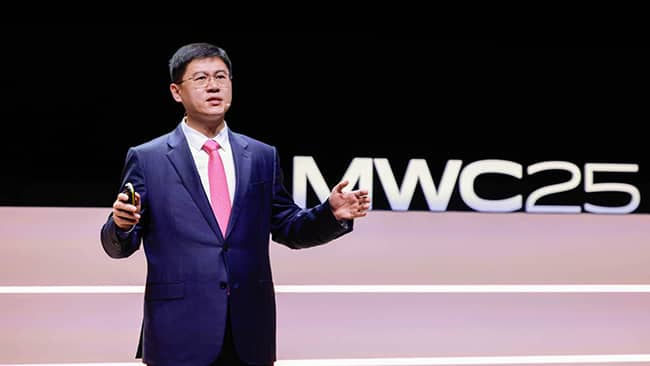China Technology giant Huawei has called for 5G evolution to serve AI driven demands.
Li Peng, Huawei’s Corporate Senior Vice President and President of ICT Sales & Service says rapid adoption of 5G-Advanced (5G-A) service and AI applications will stimulate double-digit growth in both data usage and mobile subscribers in Barcelona Spain.
“By embracing and evolving 5G, we can unlock the infinite potential of mobile networks.”
He outlined how operators can tap AI to better extract value from their networks, adding the technology is changing human-to-machine interaction and driving different requirements for latency.
“We’re rapidly entering a fully intelligent world. Intelligent applications are spreading everywhere, placing new demands on networks,” he said.
With advancements in AI, human-to-machine interaction is evolving from simple text-based to voice, gestures and more multi-modal interactions. According to Huawei’s Intelligent World 2030 report, by 2030, there will be six billion mobile AI agents around the world.
To support innovative applications, such AI-powered voice assistants and on cloud phones, networks need to be able to provide guaranteed latency, which will require shifting from non-standalone (NSA) 5G to standalone (SA) and eventually 5G-A, Li stated.
Many operators are adopting various technologies to reduce basic latency and ensure differentiated, deterministic latency for specific scenarios.
In addition, the network upgrades will help operators expand coverage and ensure a smooth experience for tens of billions of new connections for people, and hundreds of billions of new IoT connections, he stated.
AI-enabled content production and distribution are raising the bar for upload and download speeds, Li argued.
He went on to note AI is transforming how content is produced and distributed, while AI recommendations are more targeted than ever, allowing the distribution of more personalised content to broader audiences.
Both trends will cause data traffic to jump over the next five years, placing unprecedented demands on networks. To keep up, operators will need more spectrum, greater network capacity, and much larger uplink and downlink bandwidth, he insisted.
AI also will bring more complex application scenarios and a more diverse range of experience requirements. From a networking perspective, he said this will drive a shift from traditional, resource-oriented operations and management (O&M) to a more application-oriented approach.
Some operators are already developing O&M systems based on AI agents. For operations enablement, AI agents can use digital twins to predict personalised needs for individual users, helping shorten service time-to-market from days to minutes.
For network maintenance, AI agents with self-learning capabilities can predict and locate faults in seconds, increasing troubleshooting efficiency by 30 per cent; for network optimisation, digital sandboxes can simulate the traffic of real-world applications, allowing AI agents to analyse traffic patterns and optimise networks 24/7 based on application needs.
Li noted early-movers are scaling up 5G-A deployment to accelerate business monetisation in the age of AI. “New network capabilities will give rise to fresh business models. Carriers can go beyond monetising traffic and start monetising the experience itself.”
Operators around the world are actively exploring new ways to monetise experience based on multiple factors such as speed, latency and VIP benefits, he stated.


